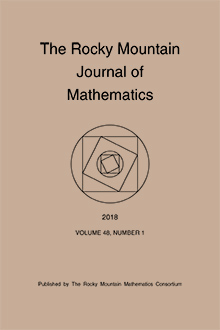Abstract
Let $G$ be a group. The intersection graph $\Gamma (G)$ of $G$ is an undirected graph without loops and multiple edges, defined as follows: the vertex set is the set of all proper non-trivial subgroups of $G$, and there is an edge between two distinct vertices $H$ and $K$ if and only if $H\cap K \neq 1$, where $1$ denotes the trivial subgroup of $G$. In this paper, we study the dominating sets in intersection graphs of finite groups. We classify abelian groups by their domination number and find upper bounds for some specific classes of groups. Subgroup intersection is related to Burnside rings. We introduce the notion of an intersection graph of a $G$-set (somewhat generalizing the ordinary definition of an intersection graph of a group) and establish a general upper bound for the domination number of $\Gamma (G)$ in terms of subgroups satisfying a certain property in the Burnside ring. The intersection graph of $G$ is the $1$-skeleton of the simplicial complex. We name this simplicial complex intersection complex of $G$ and show that it shares the same homotopy type with the order complex of proper non-trivial subgroups of $G$. We also prove that, if the domination number of $\Gamma (G)$ is 1, then the intersection complex of $G$ is contractible.
Citation
Selcuk Kayacan. "Dominating sets in intersection graphs of finite groups." Rocky Mountain J. Math. 48 (7) 2311 - 2335, 2018. https://doi.org/10.1216/RMJ-2018-48-7-2311
Information





